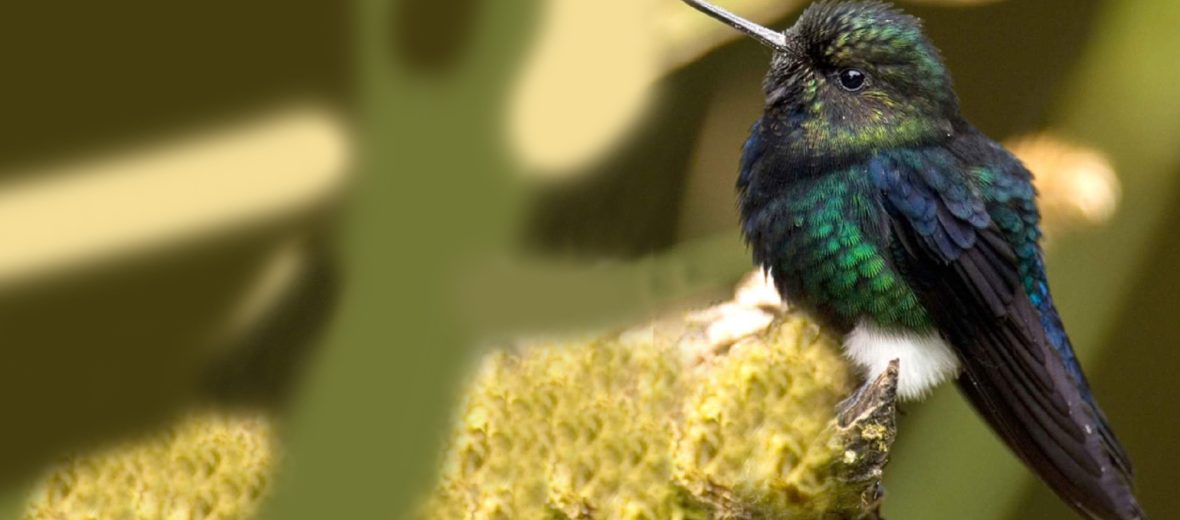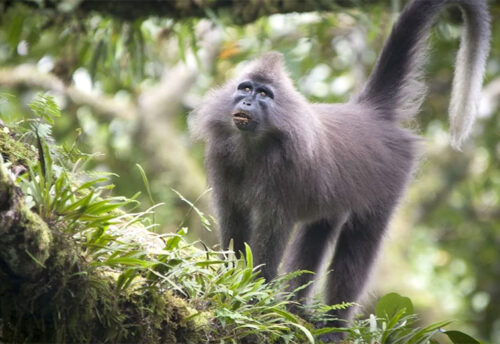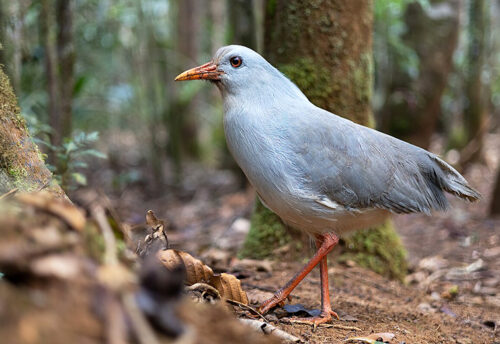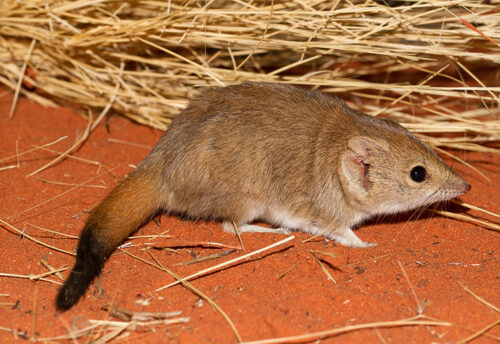
The black-breasted puffleg hails only from Ecuador. These little hummingbirds prefer humid & wet cloud and montane forests at elevations of up to 11,483 feet. With a dwindling population of an estimated 150 wild individuals, these birds are listed as Endangered by the IUCN. They suffer at the hands of habitat destruction, due to residential and commercial developments, agriculture, mining, and logging; volcanic activity; and climate change.
First the Stats…
Scientific name: Eriocnemis nigrivestis
Weight: Up to .15 ounce
Length: Up to 3.54 inches
Wingspan: Up to 5+ inches
Lifespan: Up to 10 years
Now on to the Facts!
1.) While typically silent, these little birds can sometimes produce a metallic and monotone “tseet tseet tseet” sound as they take off from a perch.
2.) Like other hummingbirds, black-breasted pufflegs feed on nectar, pollen, and the occasional insect.
3.) The status of Endangered was recently accessed in 2020.
4.) Unfortunately, these hummingbirds are extremely sensitive to environmental changes.
5.) These little critters are solitary and do their best to defend their favorite flowering plants against other hummingbirds.
But wait, there’s more on the black-breasted puffleg!
6.) Females lay up to 2 eggs each season.
7.) Chicks are fed insects via regurgitation, by mom.
Did you know…?
Hummingbirds can fly upwards of 61 mph forwards and up to 10 mph backwards!
8.) A nesting female can obtain upwards of 2,000 insects a day!
9.) Chicks leave the nest in up to just 20 days.
10.) Hummingbirds are the only known species of bird that can fly in any direction; even upside down!
Now a Short Black-Breasted Puffleg Video!
Be sure to share & comment below! Also, check out the Critter Science YouTube channel. Videos added regularly!
Want to suggest a critter for me to write about? Let me know here.
Some source content acquired from: Wikipedia & IUCN



